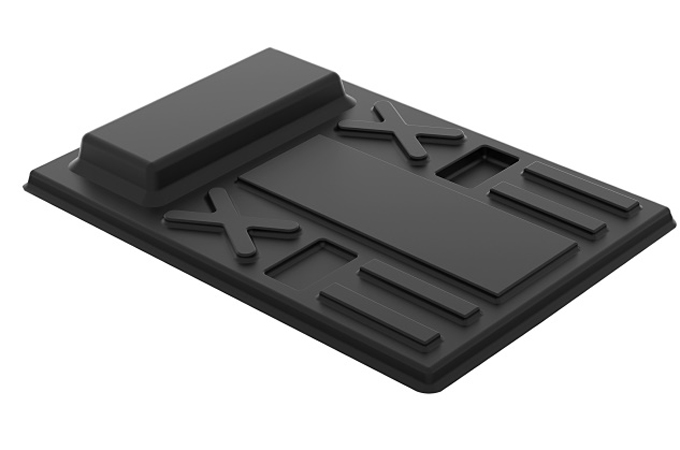
Sabic launches two materials suited for EV batteries
RIYADH, July 16, 2023
Sabic, a global leader in the chemical industry, has introduced Sabic PP compound H1090 resin and Stamax 30YH611 resin, two breakthrough materials well-suited for sheet extrusion and thermoforming that offer a unique alternative to traditional sheet metal forming, compression and injection molding, allowing customers to form large, complex structural parts.
These new products are 30 percent glass fiber-reinforced, intumescent, flame retardant (FR) materials, based on polypropylene (PP), and can be used for electric vehicle (EV) battery pack components such as top covers, enclosures and module separators, Sabic said.
Both grades offer excellent thermal barrier properties to help delay or contain thermal runaway propagation. Furthermore, the extrusion and thermoforming of these materials offer design, system cost, inherent thermal and electrical insulation and weight advantages vs. stamped sheet metal. Compared to injection molding of thermoplastics and compression molding for thermosets, which requires expensive tooling and equipment, extrusion and thermoforming can be more cost-effective and efficient for several cases.
Sabic’s development and validation of these new materials is made possible by Bluehero, an initiative that supports the automotive industry’s mission to create reliable, safe and efficient EVs, with an emphasis on helping optimize structural battery components. Bluehero leverages, among other things, Sabic’s knowledge of and expertise in large part molding, compression molding, thermoforming and advanced injection molding.
According to Abdullah Al-Otaibi, general manager, ETP & Market Solutions, Sabic: “By providing new alternatives to traditional materials and processes, SABIC can enable customers to design and manufacture the next generation of battery components while driving down costs and gaining a competitive advantage. Our experts have helped pioneer the successful adaptation of glass fiber-reinforced materials for the extrusion and thermoforming of large, complex, structural parts. The development and validation of these novel resins showcase SABIC’s leadership in polymer technologies for vehicle electrification.”
Sabic has validated the mechanical and fire safety performance and the manufacturability of Sabic PP compound H1090 resin and Stamax 30YH611 resin in EV battery applications with complex geometries, both in its labs and with customers. These materials not only provide new options for the replacement of sheet metal or thermosets in final applications, they can also be used to create prototypes to determine the feasibility of investing in injection molding tools.
COMBINING PROPERTIES
Both short glass fiber-reinforced Sabic PP compound H1090 resin and long glass fiber-reinforced Stamax 30YH611 resin feature a distinct combination of intumescence for fire safety and balanced stiffness and ductility. Exposing these materials to vertical and horizontal flames at 1200°C for 10 minutes demonstrates excellent flame-retardant behavior. Efficient charring and intumescence keep the temperature of the reverse side of parts lower than 210°C and help prevent burn-through. Intumescence is enhanced by non-brominated/non-chlorinated FR that meets the UL94 V0 standard at 1.5 mm.
In addition to excellent stiffness, strength and impact resistance over a wide temperature range, key properties of Sabic PP compound H1090 resin and Stamax 30YH611 resin include dimensional stability, low coefficient of thermal expansion (CTE) and good creep resistance. As the polymer matrix for both products, PP offers good electrical insulating properties, low density, global availability and good processability.
In addition to these products, Sabic offers injection and compression moldable flame retardant long- and short-glass PP materials – which are well suited for several internal components and complete enclosures of EV battery -packs. -TradeArabia News Service








